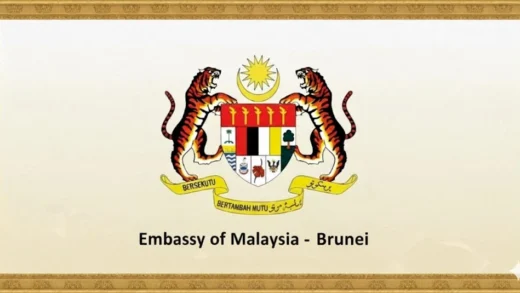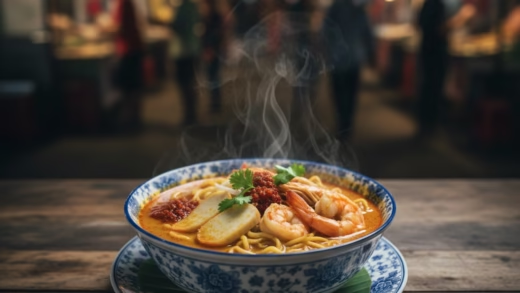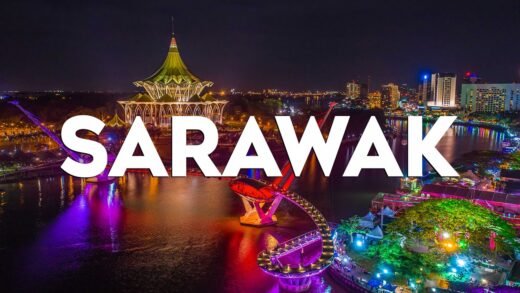Best Places to See Deepavali Lights in Malaysia

Deepavali, also known as Diwali, is one of the most celebrated festivals among the Malaysian Indian community. Known as the Festival of Lights, it symbolizes the victory of light over darkness and good over evil. This annual celebration offers a unique glimpse into Malaysian Deepavali history and culture, with dazzling decorations, cultural rituals, and vibrant festivities across the country.
Origins and Evolution of Deepavali in Malaysia
The origins of Deepavali in Malaysia trace back to Indian immigrants, primarily Tamil Hindus, who settled in the region during the colonial era. Over time, the festival has evolved into a nationwide celebration that reflects Malaysia’s multicultural identity. Malaysian Indian festival celebrations have grown to include public events, open houses, and elaborate street decorations, making Deepavali a highly anticipated event in cities like Kuala Lumpur, Penang, Johor, and Ipoh.
Significance of Deepavali for the Indian Community
For the Indian community in Malaysia, Deepavali is not only a religious observance but also a time for family bonding, cultural expression, and spiritual reflection. The festival commemorates Lord Rama’s return to Ayodhya after defeating the demon king Ravana, as well as Lord Krishna’s victory over the demon Narakasura. Beyond its religious meaning, Deepavali promotes unity, prosperity, and the triumph of righteousness, values that are deeply cherished by Malaysian families.
Traditional Customs and Rituals of Deepavali in Malaysia
Home Preparations
In the days leading up to Deepavali, families thoroughly clean and decorate their homes. Lighting oil lamps (diyas), creating colorful rangoli (kolam) designs at doorsteps, and adorning homes with vibrant decorations are common practices.
Temple Visits
Devotees visit Hindu temples to offer prayers and seek blessings. Iconic temples like Sri Mahamariamman Temple in Kuala Lumpur and Batu Caves become focal points for celebrations. Devotees participate in special poojas, processions, and cultural programs organized during the festival.
Family Gatherings and Feasts
Deepavali is also about coming together with loved ones. Families prepare and enjoy traditional foods and sweets such as laddu, barfi, murukku, and jalebi. Sharing meals and distributing sweets is a key part of Deepavali traditions in Malaysia.
Open Houses
Many Malaysian families host open houses during Deepavali, inviting neighbors and friends of all backgrounds to experience the festivities. This tradition reflects the inclusive spirit of Malaysian Indian festival celebrations.
Regional Differences in Deepavali Celebrations
Kuala Lumpur
Kuala Lumpur’s Little India in Brickfields is famous for its vibrant Deepavali lights and decorations. Batu Caves and Sri Mahamariamman Temple are major attractions, drawing thousands of devotees and tourists who want to experience the grandeur of Malaysian Deepavali celebrations.
Penang
In Penang, the Arulmigu Balathandayuthapani Temple (Waterfall Hilltop Temple) is the heart of Deepavali festivities. Streets in Little India, George Town are illuminated with colorful lights, rangoli designs, and cultural performances.
Johor Bahru
Johor Bahru showcases vibrant street decorations, traditional music, and dance performances. Community centers and temples organize events that highlight Malaysian Indian festival celebrations, providing an immersive experience for locals and visitors.
Ipoh
Ipoh’s Deepavali celebrations focus on community and cultural rituals. Local temples are beautifully lit, and markets offer a wide array of traditional sweets, snacks, and festive decorations, attracting families who wish to enjoy authentic Deepavali traditions in Malaysia.
Traditional Foods, Sweets, and Decorations
Foods and Sweets
Deepavali is synonymous with traditional Indian delicacies. Sweet treats like laddu, barfi, and jalebi are prepared in households and offered to guests. Savory snacks such as murukku, samosas, and vada add flavor to the festive meals, making food a central part of Malaysian Deepavali traditions.
Decorations
Homes and temples are adorned with oil lamps, candles, and rangoli designs. Colorful lights brighten streets and public areas, symbolizing the triumph of light over darkness.
Role of Indian Temples in Malaysian Deepavali Celebrations
Indian temples are central to Deepavali festivities, serving as spiritual and cultural hubs. Temples such as Batu Caves and Sri Mahamariamman Temple host religious ceremonies, cultural performances, and community gatherings. These temples are not only places of worship but also iconic landmarks for visitors seeking to experience where to celebrate Deepavali in Malaysia.
Conclusion
Celebrating Deepavali in Malaysia is a unique way to witness the country’s rich multicultural heritage. From the glittering streets of Kuala Lumpur to the illuminated temples of Penang and Ipoh, every region showcases its own charm and traditions. Experiencing Deepavali offers insight into Malaysian Deepavali history and culture, with vibrant lights, festive foods, and community celebrations that leave lasting memories for locals and tourists alike.





Comments are closed.